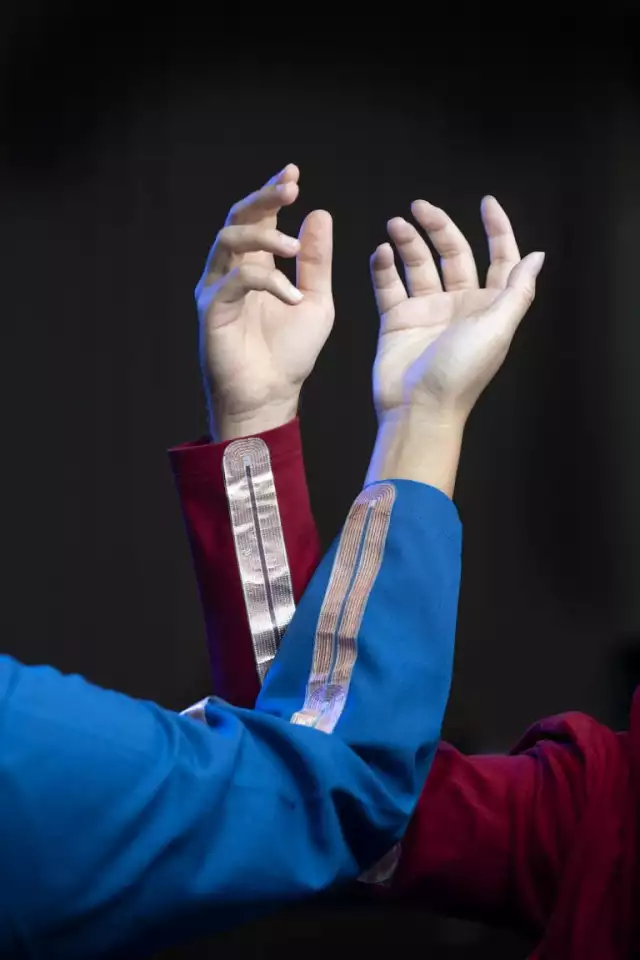Researchers at the University of California, Irvine (UCI) have developed a novel, high-tech form of fabric that foreshadows a future where items of clothing can"talk" to one another, and purchases might be made with a high-five or wave of the arm. It marks an impressive advance in near-field communications (NFC), extending the range of the wireless transmission technology from inches to more than four feet (120 cm).
“If you’ve held your smartphone or charge card close to a reader to pay for a purchase, you have taken advantage of near-field signaling technologies," explains co-author Peter Tseng. "Our fabrics work on the same principle, but we’ve extended the range significantly. This means you could potentially keep your phone in your pocket, and just by brushing your body against other textiles or readers, power and information can be transferred to and from your device.”
As opposed to some other types of smart fabric that rely on continuous hard-wired connections that can limit their motion, the UCI team's solution is battery-free and relies on elements made up of etched foils of copper and aluminum that can transmit signals via magnetic induction. These elements are likened to "rails," and not only make that particular garment mechanically flexible, but allow signals to be sent to other pieces of clothing.
Pants could be made to track leg movements and relay data to a shirt that monitors heart rate, for example. The material could also be integrated into hospital gowns to do the job of various patient sensors placed around the body, be used to make payments with a swipe of the sleeve, or exchange digital information with others wearing clothing with the same capabilities.

“With our fabric, electronics establish signaling as soon as you hover your clothes over a wireless reader, so you can share information with a simple high-five or handshake,” says lead author Amirhossein Hajiaghajani. “You would no longer need to manually unlock your car with a key or separate wireless device, and your body would become the badge to open facility gates.”
According to the scientists, the metamaterials at the core of the new wireless communication technology can be made at low cost and could be easily customized for size. They can also be heat-pressed into existing clothing, negating the need for expensive outlays for futuristic outfits.
“Our textiles are simple to make and can be integrated with interesting wearable designs,” Hajiaghajani says. “We want to create designs that not only are cool and inexpensive but can reduce the burden that modern electronics can bring to our lives.”
The research was published in the journal Nature Electronics.
Source: University of California, Irvine





